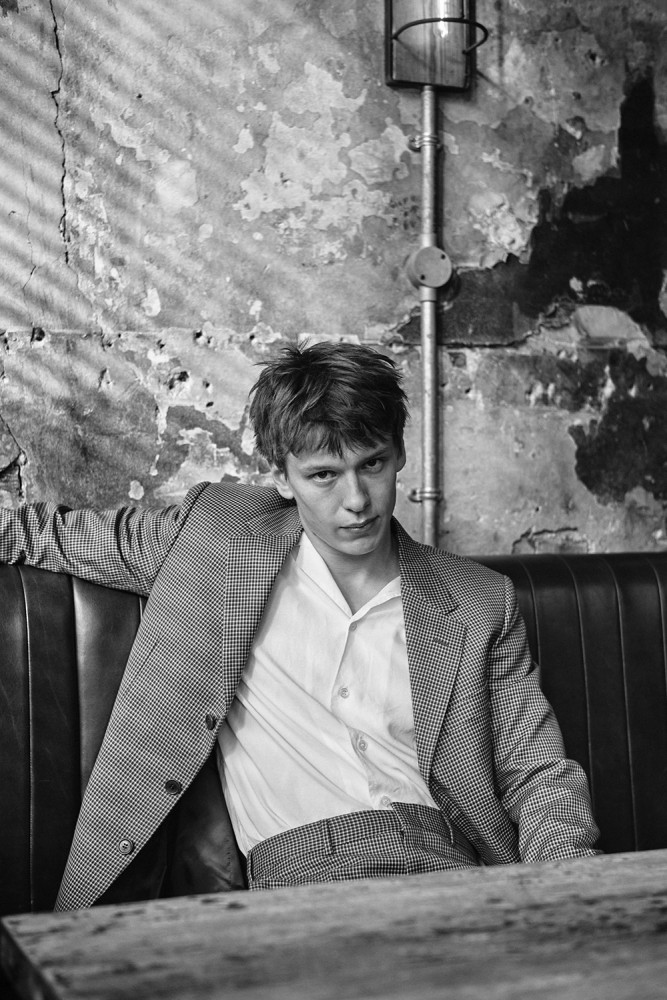
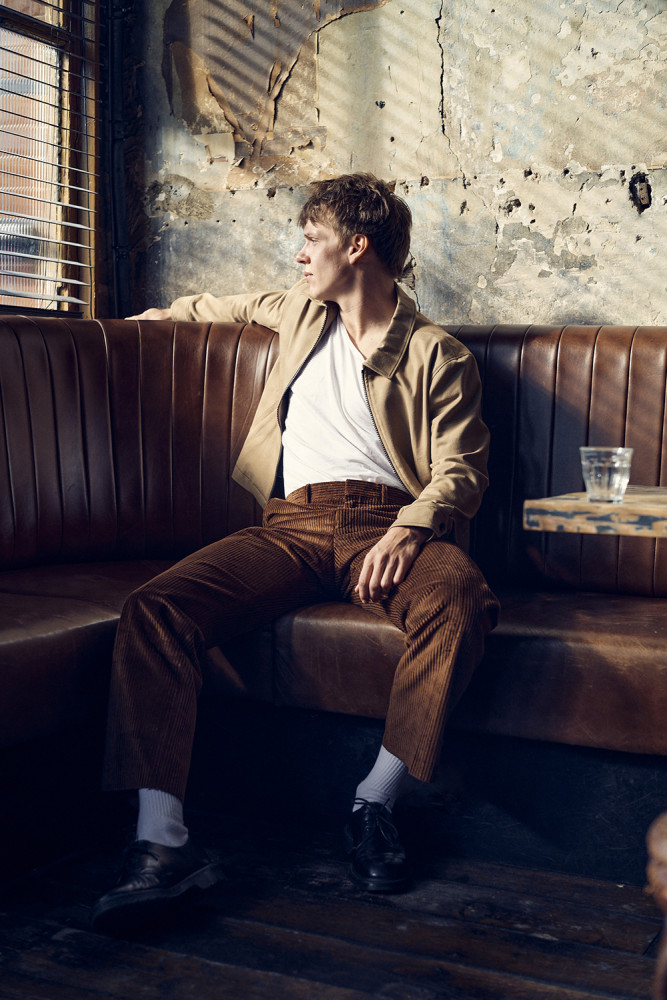
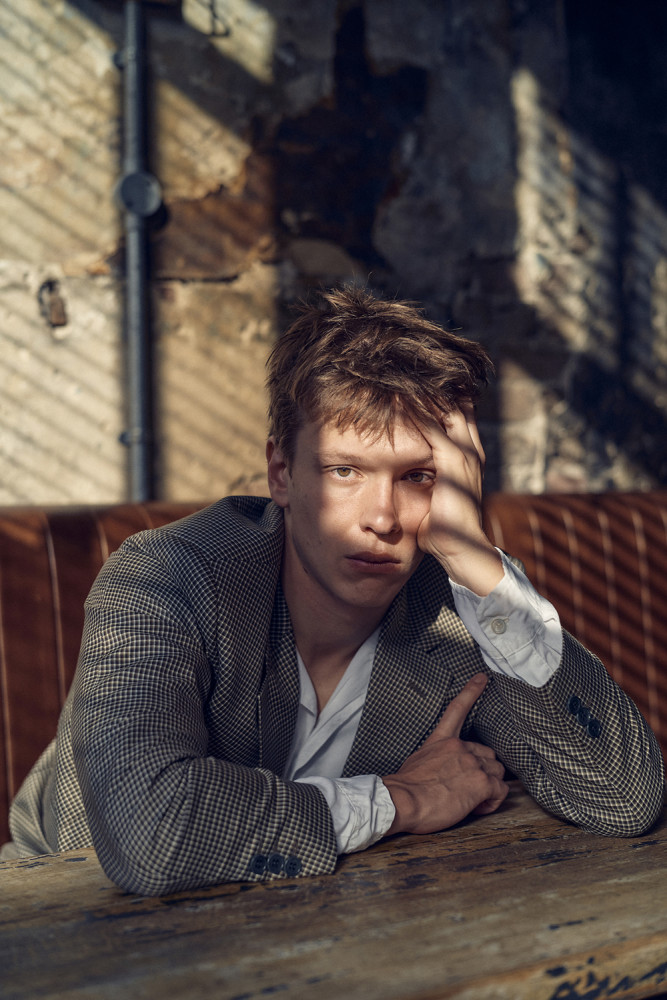
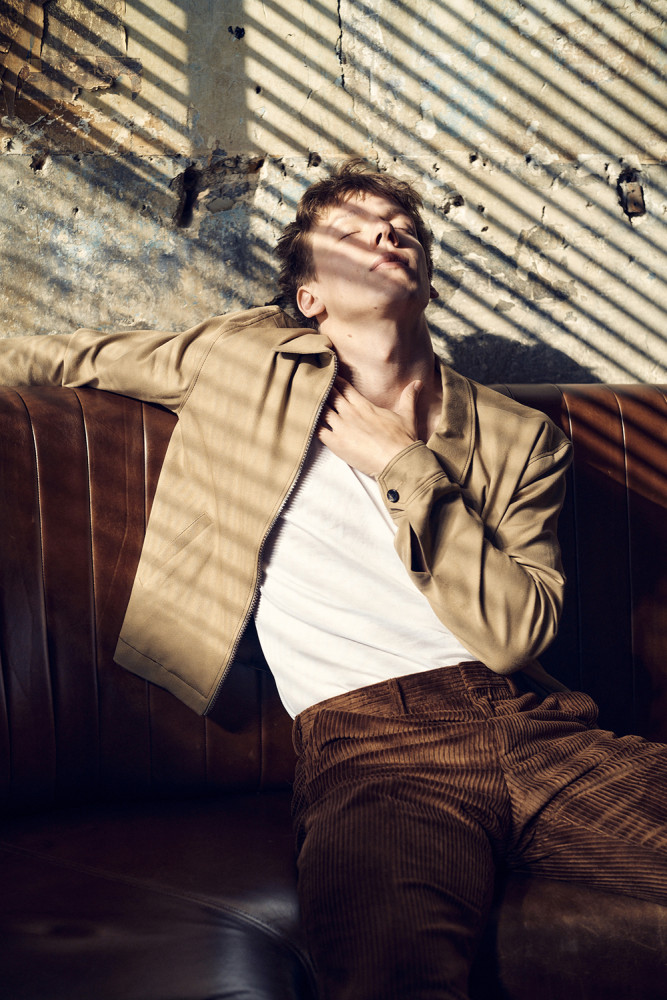
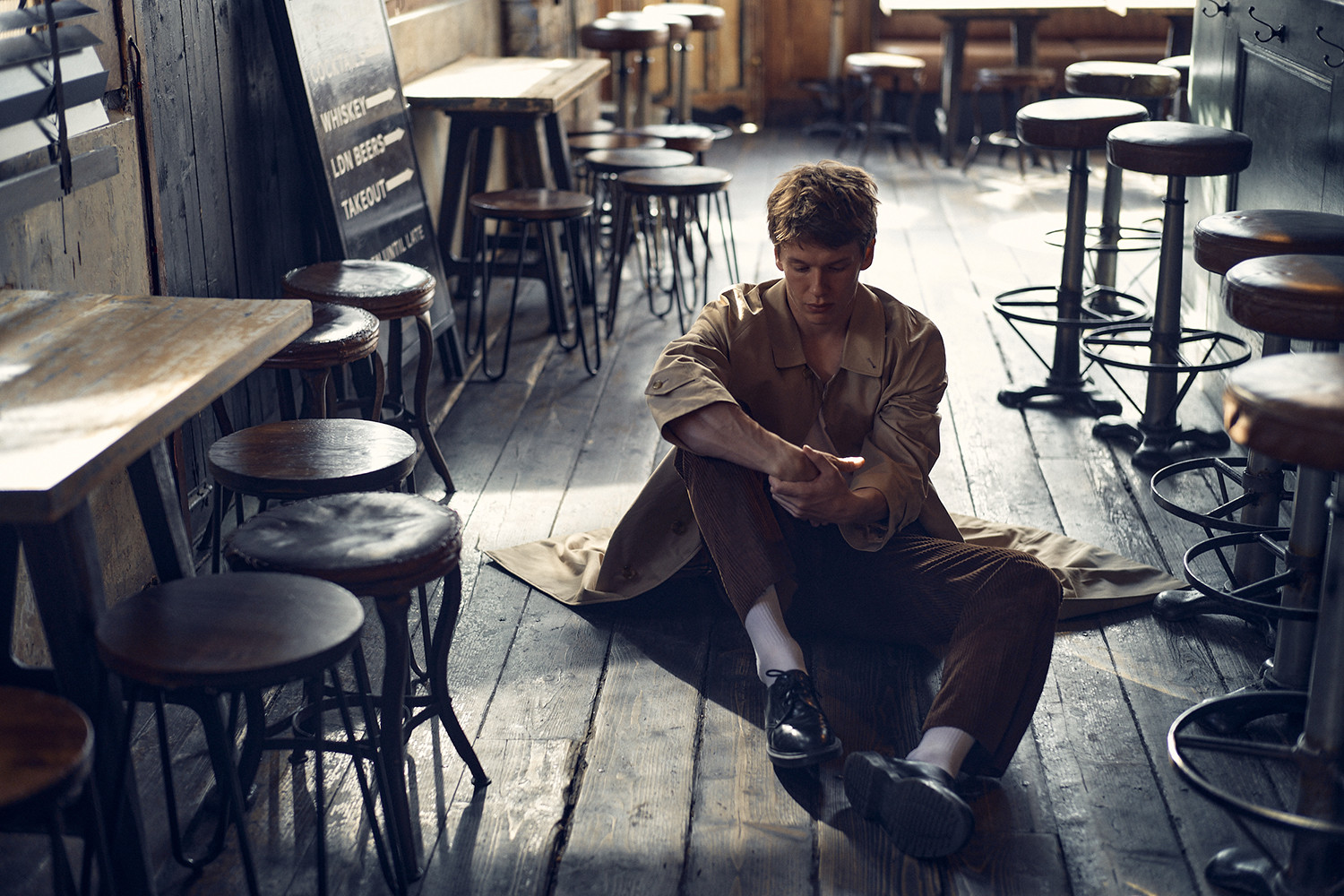
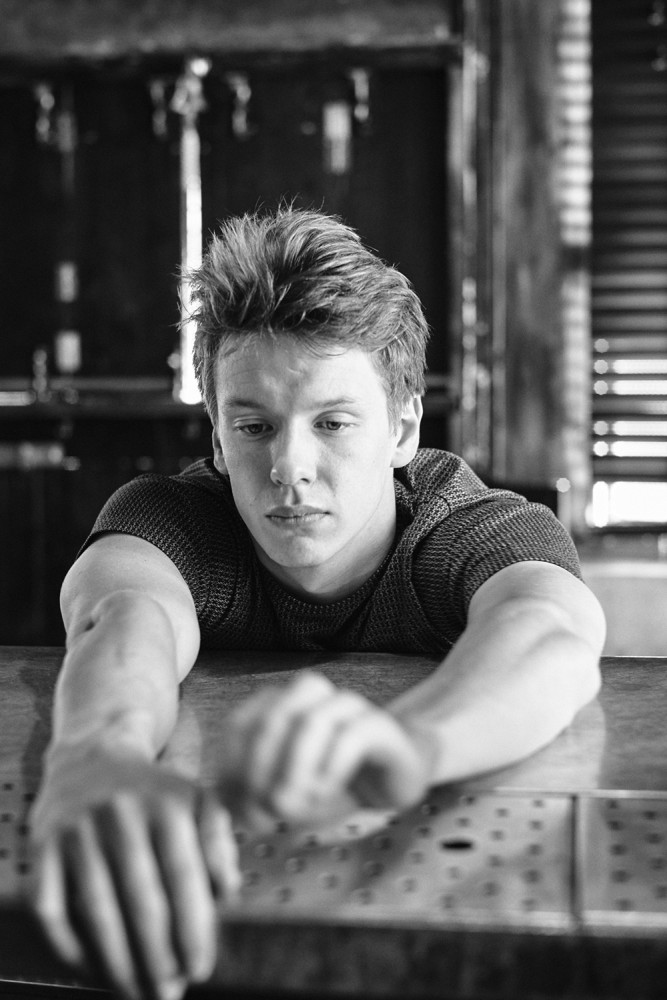
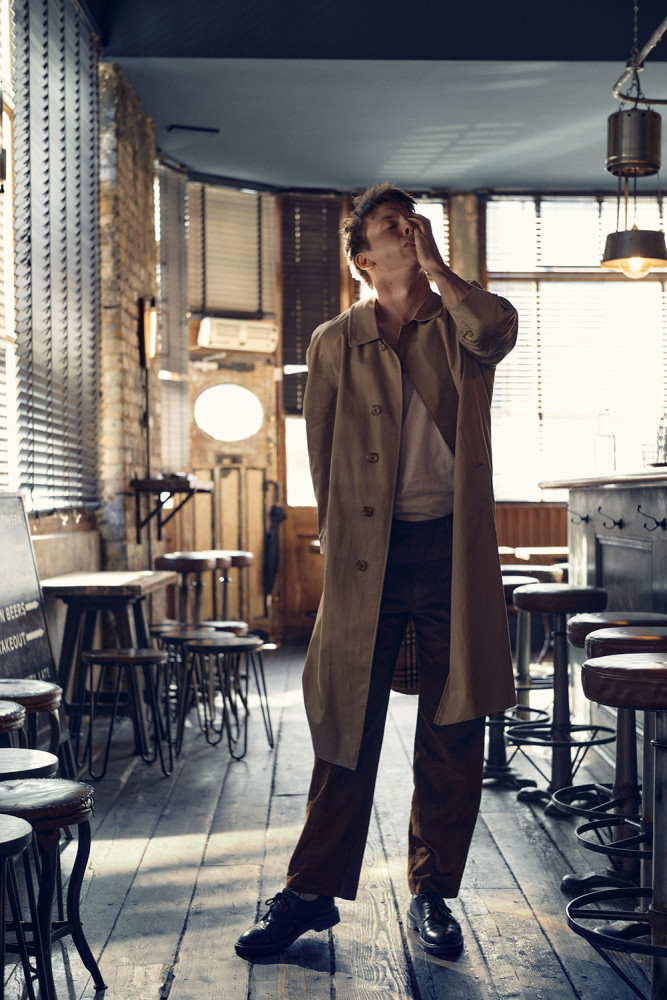









INTERVIEW
Aldo Filiberto
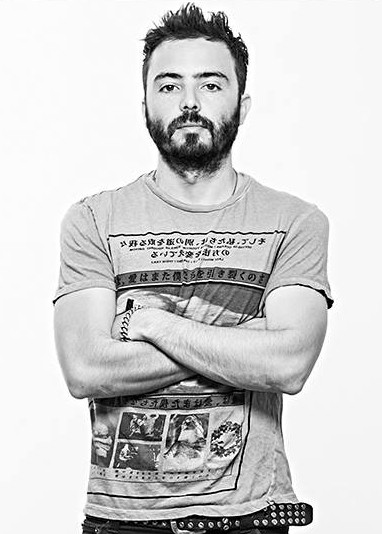
Photography Aldo Filiberto Fashion stylist Kudzai Chibaduki Camera Leica SL (Typ 601) with Summilux-SL 50 f/1.4 Asph
It seems that actors make perfect sparring partners for photographers: they are confident in front of the camera, and masters of using body language as a form of expression. Aldo Filiberto took his Leica SL (Typ 601) and Summilux-SL 50 f/1.4 Asph. into a classic London pub for a shoot with up-and-coming British actor, Freddie Wise.
Here the photographer, who also works with moving images, talks about the unique appeal of portrait photography, the qualities he looks for in a subject, and how he goes about creating a connection.
As well as being a photographer, you also specialise in films and 3D motion graphics. In 2013, you directed a movie – The Fortune Theory. What was it about?
It's a film about the lack of true emotional connections in our contemporary society, and the personal journey to discover oneself. Everyone evolves through a state of perpetual motion, colliding and crashing with each other out of the necessity to evolve.
Does this film in any way reflect your experience as a portrait photographer?
My directorial debut was born from the same interest in people, how they live, what they think, and what makes them tick. It’s a very human story of a young man growing up and discovering himself. Making a film is an absolutely crazy learning experience. I was very blessed to get the chance to direct a feature film, and I’m actually planning to make another one in the near future.
The series featured here revolves around British actor Freddie Wise. What can you tell us about him?
Freddie is a super-talented, young British actor and a wonderful human being. I enjoyed the shoot, but I also enjoyed talking to him and getting to know more about him. Despite his young age, Freddie has already worked in great shows such as Poldark and Maleficent, and I was fortunate to be able to photograph him. He is a very interesting artist and I see a bright future for him.
How did this collaboration come about? Do you have a particular connection with actors?
The shoot was a personal project. I love working with actors, not just in my film projects, but also in my photography. Actors are generally very sensitive and profoundly interesting artists. They often have quite complex personalities, which makes them a perfect subject.
What distinguishes a photo shoot with an actor – and what did you especially appreciate about working with Freddie?
I love to explore an actor’s ability to play with their emotions. A good actor will offer you so many different emotions, and they are all genuine. It is challenging to capture their true essence – but when it works, you end up with a very powerful image.
What role does the subject play in your work, and what qualities are you looking for?
When I’m shooting, the model is my main focus. I’m truly observing and listening to them. Ultimately, I’m genuinely interested in them. A good model is someone who is willing not to care about how they might be perceived.
How long did the shoot with Freddie go on for? Do you ever improvise on the spot?
The session with Freddie lasted two hours. I don’t believe in long sessions. I prefer to arrive at the shoot well prepared, and work at a fast pace. I aim for a brief, but very intense encounter with my model. All you need are a few true glimpses of your subject’s inner world, and usually those moments are rare and brief. It’s like a dance: we improvise, we move around, we laugh, we talk, we open up to each other, and hopefully something cool just happens.
Where did you shoot Freddie's portraits, and why did you choose this particular location?
We shot at The Sun Tavern in Bethnal Green, London. It’s a great-looking dive bar; the management is awesome and the drinks are great. Check it out if you are in the area. The location was a perfect match for the look we were going for, as we were after something very cinematic.
Your use of light is exceptional, and very cinematic. What is your preferred lighting method?
Thank you for using the term ‘exceptional’, that’s very flattering. Light is the fundamental component in every form of visual art. Light is everything, it shapes and defines not only what we see, but also how we feel about it. I have a very instinctive response to light. I like to work with natural light, and I’m looking for the right amount of contrast to shape my subject. I also occasionally use artificial light, but especially for portraiture, there is something magical about natural light.
You shot this series with the Leica SL (Typ 601) and the Leica Summilux 50mm f/1.4. How did you find working with this ensemble?
I love this camera and lens combo. It is so powerful and discreet, and very intuitive to operate. I think your camera equipment should help you achieve your vision, not be an obstacle. This is one of Leica’s particular strengths: they create cameras that do not take away from the experience of photography. When I’m shooting a subject, I’m looking for a connection. A small and discreet camera such as a Leica allows for greater intimacy. There is no bulky and noisy equipment between me and my model. I also love working with Leica’s manual focus lenses with the aid of an adapter. The image quality is unbelievable. Also, the manual focus keeps me in the zone and gives me a tactile experience.
How would you like your images to be perceived? What would you say is the purpose of your photography?
I’m not sure how I want my work to be seen. I hope people appreciate it, and perhaps are able to see the inner beauty and truth that I'm trying to capture. Photography is a journey of discovery for me – the value is in the process, rather than the outcome.